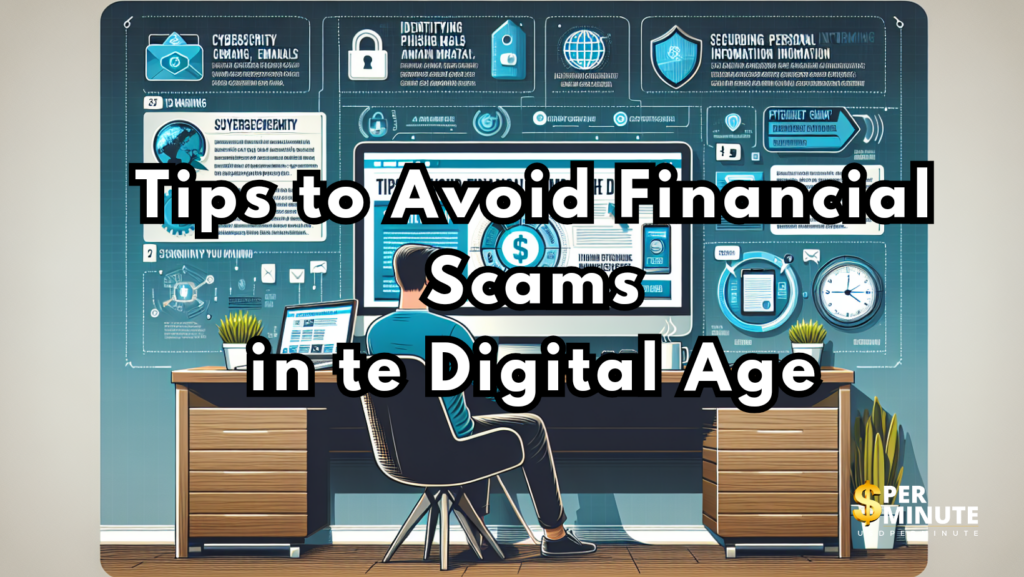Tips to Avoid Financial Scams in te Digital Age

In the digital era, financial scams are becoming increasingly sophisticated, targeting individuals and businesses alike. With the widespread use of online banking, e-wallets, and digital transactions, protecting yourself from fraud is more important than ever. Here are some essential tips to safeguard your finances in this modern landscape.
1. Recognize Common Types of Scams
Understanding the common tactics scammers use can help you stay vigilant. Popular scams include:
- Phishing Emails and Messages: Fraudulent communications designed to steal personal information.
- Fake Investment Opportunities: Promises of high returns with little to no risk, often tied to cryptocurrency or stocks.
- Tech Support Scams: Fake calls or pop-ups claiming your device has a problem, urging you to provide access or pay for unnecessary services.
- Romance Scams: Emotional manipulation to extract money from victims through fake relationships.
2. Protect Your Personal Information
Never share sensitive details, such as passwords, PINs, or bank account numbers, with anyone. Scammers often pose as legitimate institutions to trick you into divulging this information. Verify the authenticity of requests by contacting your bank or service provider directly.
3. Use Strong and Unique Passwords
Weak or reused passwords make it easier for scammers to gain access to your accounts. Use strong, unique passwords that combine letters, numbers, and special characters. Consider using a reputable password manager to keep track of them securely.
4. Enable Two-Factor Authentication (2FA)
Two-factor authentication adds an extra layer of security to your accounts. Even if a scammer obtains your password, they will need a second verification step, such as a code sent to your phone or email, to gain access.
5. Be Skeptical of “Too Good to Be True” Offers
Scammers often lure victims with offers that sound too good to be true, such as guaranteed high returns, lottery winnings, or exclusive deals. Approach such claims with caution and do your research before committing any money.
6. Verify URLs and Email Addresses
Fake websites and email addresses are often used to impersonate legitimate businesses. Before entering any information, check that the URL begins with “https://” and verify the domain name. Be cautious of slight misspellings or unusual extensions (e.g., “.net” instead of “.com”).
7. Avoid Clicking on Suspicious Links
Links in unsolicited emails or messages can lead to malicious websites or download malware onto your device. Always hover over links to see the full URL before clicking, and avoid opening attachments from unknown senders.
8. Keep Your Devices Secure
Ensure your devices are protected with antivirus software and keep your operating system and applications updated. Updates often include security patches that address vulnerabilities scammers may exploit.
9. Monitor Your Financial Statements
Regularly review your bank and credit card statements for unauthorized transactions. If you notice any suspicious activity, report it to your financial institution immediately.
10. Educate Yourself and Others
Stay informed about the latest scams by following updates from trusted sources, such as government websites or financial institutions. Share this knowledge with friends and family to help them stay safe.
What to Do If You’ve Been Scammed
If you fall victim to a financial scam, act quickly:
- Report the incident to your bank or credit card provider.
- File a complaint with your local consumer protection agency or financial regulatory body.
- Change your passwords and secure your accounts to prevent further breaches.
Conclusion
In the digital age, staying ahead of scammers requires vigilance, knowledge, and proactive measures. By following these tips, you can significantly reduce your risk of falling prey to financial fraud. Remember, when it comes to your finances, it’s always better to be cautious and verify than to regret later.
Stay safe, stay informed!